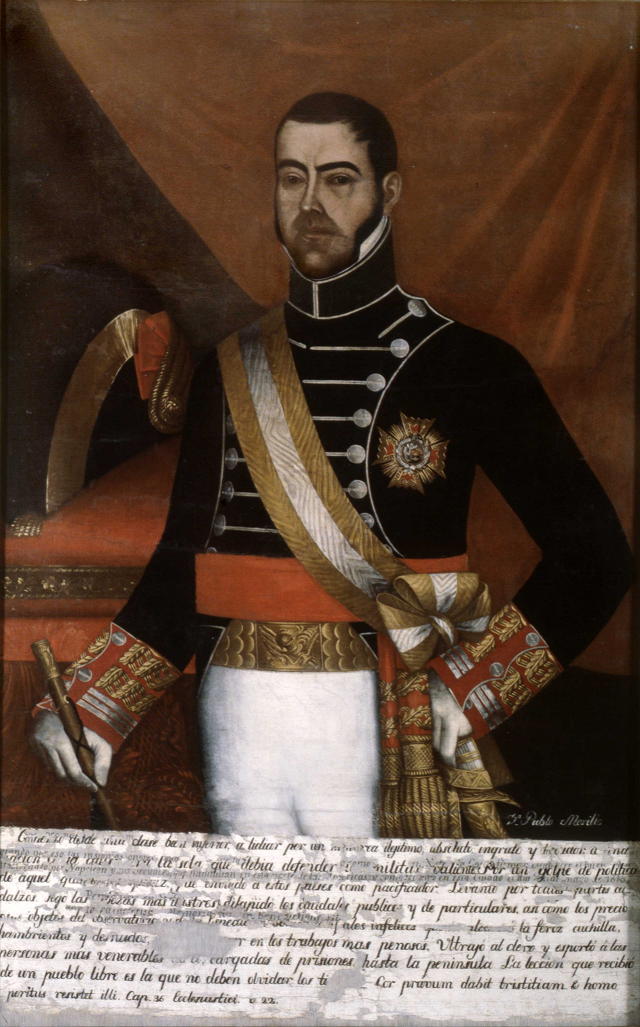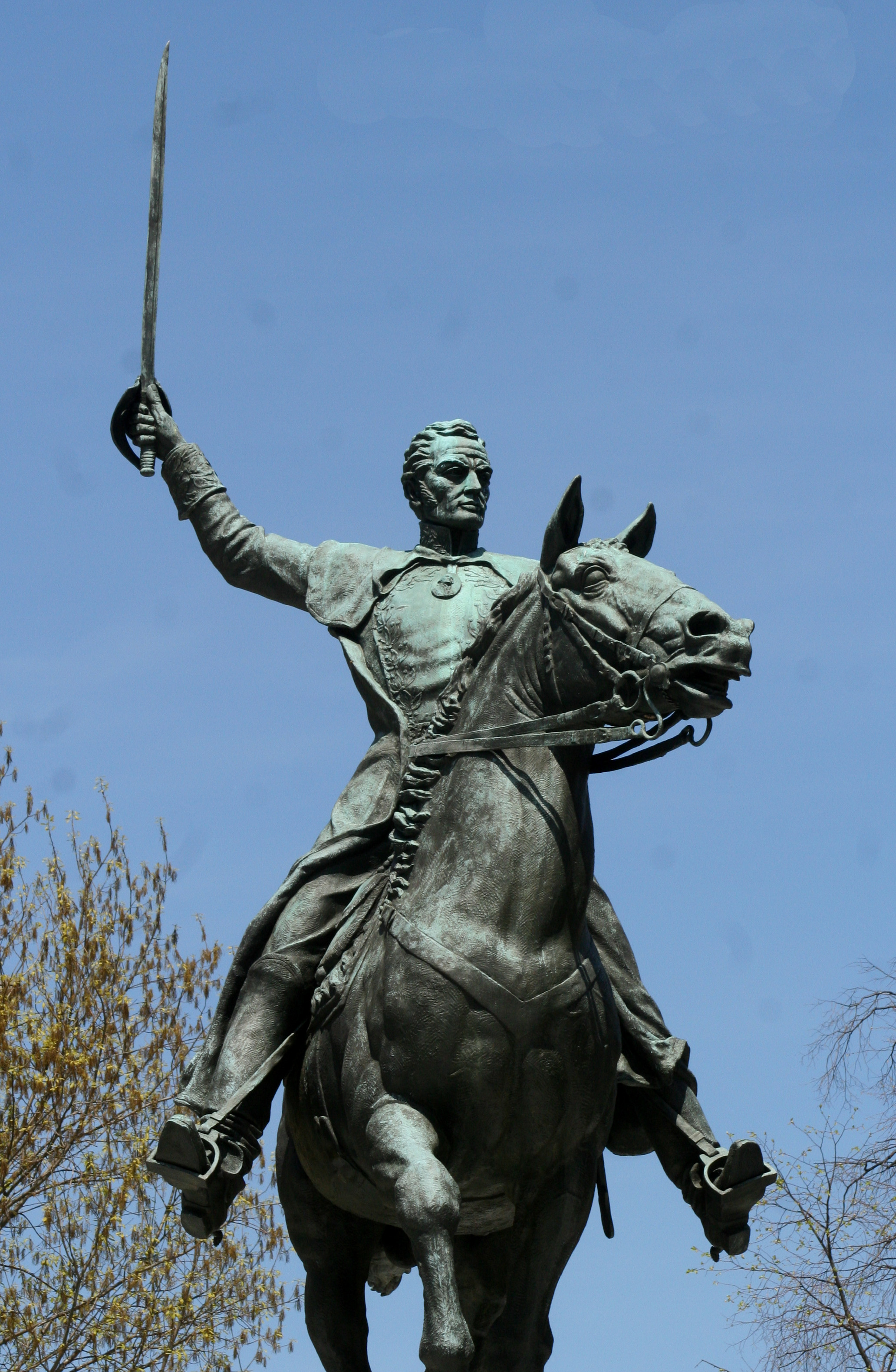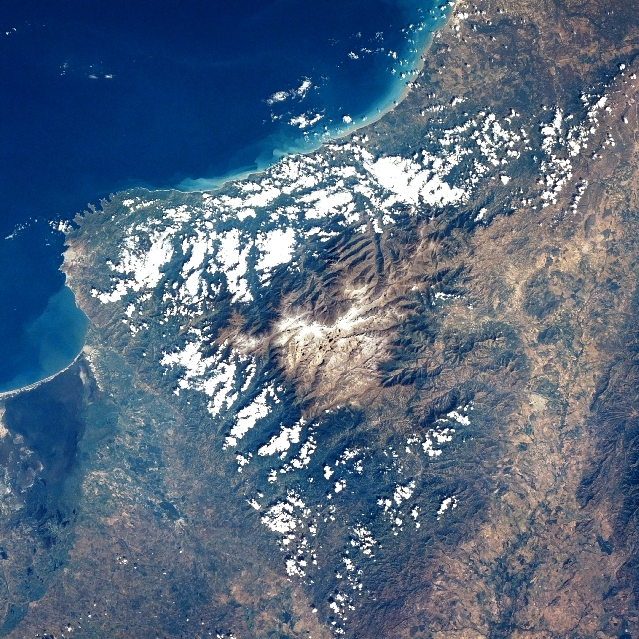|
Pablo Morillo
Pablo Morillo y Morillo, Count of Cartagena and Marquess of La Puerta, a.k.a. ''El Pacificador'' (The Peace Maker) (5 May 1775 – 27 July 1837) was a Spanish general. Biography Morillo was born in Fuentesecas, Zamora, Spain. In 1791 he enlisted in the Real Cuerpo de Marina (Spanish Royal Marine Corps) and participated in the Battle of Trafalgar in which he was wounded and made prisoner by the English in 1805. He also fought against Napoleon Bonaparte in 1808 during the Peninsular War (part of Napoleonic Wars) to defend his mother country Spain against the French invasion. Once the war ended and the Spanish monarchy was restored, King Ferdinand VII of Spain appointed him Expedition Commander and General Captain of the Provinces of Venezuela on 14 August 1814. He set sail with a fleet of 18 warships and 42 cargo ships and disembarked in Carupano and Isla Margarita with the mission to pacify the revolts against the Spanish monarchy in the American colonies. He travelled ... [...More Info...] [...Related Items...] OR: [Wikipedia] [Google] [Baidu] |
Captaincy General Of Venezuela
The Captaincy General of Venezuela ( es, Capitanía General de Venezuela), also known as the Kingdom of Venezuela (), was an administrative district of colonial Spain, created on September 8, 1777, through the Royal Decree of Graces of 1777, to provide more autonomy for the provinces of Venezuela, previously under the jurisdiction of the Audiencia of Santo Domingo (and thus the Viceroyalty of New Spain) and then the Viceroyalty of New Granada. It established a unified government in political (governorship), military ( captaincy general), fiscal ( intendancy), ecclesiastical (archdiocese) and judicial ('' audiencia'') affairs. Its creation was part of the Bourbon Reforms and laid the groundwork for the future nation of Venezuela, in particular by orienting the province of Maracaibo towards the province of Caracas. History Antecedents The Bourbon dynasty had already taken steps towards reorganizing their overseas possessions and Venezuela, in particular. When the New Granadan ... [...More Info...] [...Related Items...] OR: [Wikipedia] [Google] [Baidu] |
Venezuela
Venezuela (; ), officially the Bolivarian Republic of Venezuela ( es, link=no, República Bolivariana de Venezuela), is a country on the northern coast of South America, consisting of a continental landmass and many islands and islets in the Caribbean Sea. It has a territorial extension of , and its population was estimated at 29 million in 2022. The capital and largest urban agglomeration is the city of Caracas. The continental territory is bordered on the north by the Caribbean Sea and the Atlantic Ocean, on the west by Colombia, Brazil on the south, Trinidad and Tobago to the north-east and on the east by Guyana. The Venezuelan government maintains a claim against Guyana to Guayana Esequiba. Venezuela is a federal presidential republic consisting of 23 states, the Capital District and federal dependencies covering Venezuela's offshore islands. Venezuela is among the most urbanized countries in Latin America; the vast majority of Venezuelans live in the cities of ... [...More Info...] [...Related Items...] OR: [Wikipedia] [Google] [Baidu] |
Simon Bolivar
Simon may refer to: People * Simon (given name), including a list of people and fictional characters with the given name Simon * Simon (surname), including a list of people with the surname Simon * Eugène Simon, French naturalist and the genus authority ''Simon'' * Tribe of Simeon, one of the twelve tribes of Israel Places * Şimon ( hu, links=no, Simon), a village in Bran Commune, Braşov County, Romania * Șimon, a right tributary of the river Turcu in Romania Arts, entertainment, and media Films * ''Simon'' (1980 film), starring Alan Arkin * ''Simon'' (2004 film), Dutch drama directed by Eddy Terstall Games * ''Simon'' (game), a popular computer game * Simon Says, children's game Literature * ''Simon'' (Sutcliff novel), a children's historical novel written by Rosemary Sutcliff * Simon (Sand novel), an 1835 novel by George Sand * '' Simon Necronomicon'' (1977), a purported grimoire written by an unknown author, with an introduction by a man identified only as " ... [...More Info...] [...Related Items...] OR: [Wikipedia] [Google] [Baidu] |
Spanish Constitution Of 1812
The Political Constitution of the Spanish Monarchy ( es, link=no, Constitución Política de la Monarquía Española), also known as the Constitution of Cádiz ( es, link=no, Constitución de Cádiz) and as ''La Pepa'', was the first Constitution of Spain and one of the earliest codified constitutions in world history. The Constitution was ratified on 19 March 1812 by the Cortes of Cádiz, the first Spanish legislature that included delegates from the entire nation, including Spanish America and the Philippines. "It defined Spanish and Spanish American liberalism for the early 19th century." With the notable exception of proclaiming Roman Catholicism as the official and sole legal religion in Spain, the constitution was one of the most liberal of its time: it affirmed national sovereignty, separation of powers, freedom of the press, free enterprise, abolished corporate privileges ( fueros), and established a constitutional monarchy with a parliamentary system. It was one of t ... [...More Info...] [...Related Items...] OR: [Wikipedia] [Google] [Baidu] |
Pablo Morillo, 1815
Pablo is a Spanish form of the name Paul. People *Pablo Alborán, Spanish singer *Pablo Aimar, Argentine footballer *Pablo Armero, Colombian footballer *Pablo Bartholomew, Indian photojournalist * Pablo Brandán, Argentine footballer *Pablo Brenes, Costa Rican footballer *Pablo Alborán, Spanish singer-songwriter *Pablo Casals, Catalan cello virtuoso *Pablo Couñago, Spanish footballer *Pablo Cuevas, Uruguayan tennis player *Pablo Eisenberg (born 1932), American scholar, social justice advocate, and tennis player *Pablo Escobar, Colombian drug lord *Pablo Iglesias Turrión, Spanish politician *Pablo Francisco, Chilean American comedian * Pablo Galdames, Chilean footballer *Pablo P. Garcia, Filipino politician *Pablo Hernández Domínguez, Spanish footballer *Pablo Ibañez, Spanish footballer * Pablo Iglesias Simón, Spanish theatre director, sound designer and playwright *Pablo Lombi, Argentine field hockey player *Pablo Darío López, Argentine footballer *Pablo Iglesias Posse, Spa ... [...More Info...] [...Related Items...] OR: [Wikipedia] [Google] [Baidu] |
Military Career Of Simón Bolívar
The military and political career of Simón Bolívar (July 24, 1783 – December 17, 1830), which included both formal service in the armies of various revolutionary regimes and actions organized by himself or in collaboration with other exiled patriot leaders during the years from 1811 to 1830, was an important element in the success of the independence wars in South America. Given the unstable political climate during these years, Bolívar and other patriot leaders, such as Santiago Mariño, Manuel Piar, José Francisco Bermúdez and Francisco de Paula Santander often had to go into exile in the Caribbean or nearby areas of Spanish America that at the moment were controlled by those favoring independence, and from there, carry on the struggle. These wars resulted in the creation of several South American states out of the former Spanish colonies, the currently existing Venezuela, Colombia, Ecuador, Peru and Bolivia, and the now defunct Gran Colombia. In his 30-year career ... [...More Info...] [...Related Items...] OR: [Wikipedia] [Google] [Baidu] |
United Provinces Of New Granada
The United Provinces of New Granada was a country in South America from 1810 to 1816, a period known in Colombian history as ''la Patria Boba'' ("the Foolish Fatherland"). It was formed from areas of the New Kingdom of Granada, roughly corresponding to the territory of modern-day Colombia. The government was a federation with a parliamentary system, consisting of a weak executive and strong congress. The country was reconquered by Spain in 1816. Government The Triumvirate After two attempts at establishing a congress, the State of Cundinamarca managed to convene a Congress of the United Provinces, which met in late 1811. It issued an Act of Federation on November 27, 1811, which allowed Congress to establish a separate executive branch, if it felt it was required. An executive, consisting of a triumvirate, was created in 1814 after a royalist army from Pasto and Popayán defeated one from Cundinamarca (which had not accepted the Union and, in fact, had even sent troops again ... [...More Info...] [...Related Items...] OR: [Wikipedia] [Google] [Baidu] |
Cartagena De Indias
Cartagena ( , also ), known since the colonial era as Cartagena de Indias (), is a city and one of the major ports on the northern coast of Colombia in the Caribbean Coast Region, bordering the Caribbean sea. Cartagena's past role as a link in the route to West Indies provides it with important historical value for world exploration and preservation of heritage from the great commercial maritime routes. As a former Spanish colony, it was a key port for the export of Bolivian silver to Spain and for the import of enslaved Africans under the asiento system. It was defensible against pirate attacks in the Caribbean. The city's strategic location between the Magdalena and Sinú Rivers also gave it easy access to the interior of New Granada and made it a main port for trade between Spain and its overseas empire, establishing its importance by the early 1540s. Modern Cartagena is the capital of the Bolívar Department, and had a population of 1,028,736, according to the 2018 c ... [...More Info...] [...Related Items...] OR: [Wikipedia] [Google] [Baidu] |
Santa Marta
Santa Marta (), officially Distrito Turístico, Cultural e Histórico de Santa Marta ("Touristic, Cultural and Historic District of Santa Marta"), is a List of cities in Colombia, city on the coast of the Caribbean Sea in northern Colombia. It is the capital of Magdalena Department and the fourth-largest urban city of the Caribbean Region of Colombia, after Barranquilla, Cartagena, Colombia, Cartagena, and Soledad, Atlantico, Soledad. Founded on July 29, 1525, by the Spanish conqueror Rodrigo de Bastidas, it was the first Spanish settlement in Colombia, its oldest surviving city, and second oldest in South America. This city is situated on a bay by the same name and as such, it is a prime tourist destination in the Caribbean region. History Pre-Colombian times Before the arrival of Europeans, the South American continent was inhabited by a number of Indigenous peoples of the Americas, indigenous groups. Due to a combination of tropical weather, significant rainfall, and the ... [...More Info...] [...Related Items...] OR: [Wikipedia] [Google] [Baidu] |
Puerto Cabello
Puerto Cabello () is a city on the north coast of Venezuela. It is located in Carabobo State, about 210 km west of Caracas. As of 2011, the city had a population of around 182,400. The city is home to the largest and busiest port in the country and is thus a vital cog in the country's vast oil industry. The word 'cabello' translates to 'hair'. The Spaniards took to saying that the sea was so calm there that a ship could be secured to the dock by tying it with a single hair. Climate Puerto Cabello has a borderline tropical savanna climate ( Köppen ''Aw''), almost dry enough to be a hot semi-arid climate (''BSh'') as prevails further west on the Caribbean coast of Venezuela. History The foundation date of Puerto Cabello is not known although its name was documented for the first time on the map of the province of Caracas prepared in 1578 by Juan de Pimentel. Puerto Cabello's location made it an easy prey to buccaneers and was a popular trading post for Dutch smugglers du ... [...More Info...] [...Related Items...] OR: [Wikipedia] [Google] [Baidu] |
Caracas
Caracas (, ), officially Santiago de León de Caracas, abbreviated as CCS, is the capital and largest city of Venezuela, and the center of the Metropolitan Region of Caracas (or Greater Caracas). Caracas is located along the Guaire River in the northern part of the country, within the Caracas Valley of the Venezuelan coastal mountain range (Cordillera de la Costa). The valley is close to the Caribbean Sea, separated from the coast by a steep 2,200-meter-high (7,200 ft) mountain range, Cerro El Ávila; to the south there are more hills and mountains. The Metropolitan Region of Caracas has an estimated population of almost 5 million inhabitants. The center of the city is still ''Catedral'', located near Bolívar Square, though some consider the center to be Plaza Venezuela, located in the Los Caobos area. Businesses in the city include service companies, banks, and malls. Caracas has a largely service-based economy, apart from some industrial activity in its metropolitan a ... [...More Info...] [...Related Items...] OR: [Wikipedia] [Google] [Baidu] |





